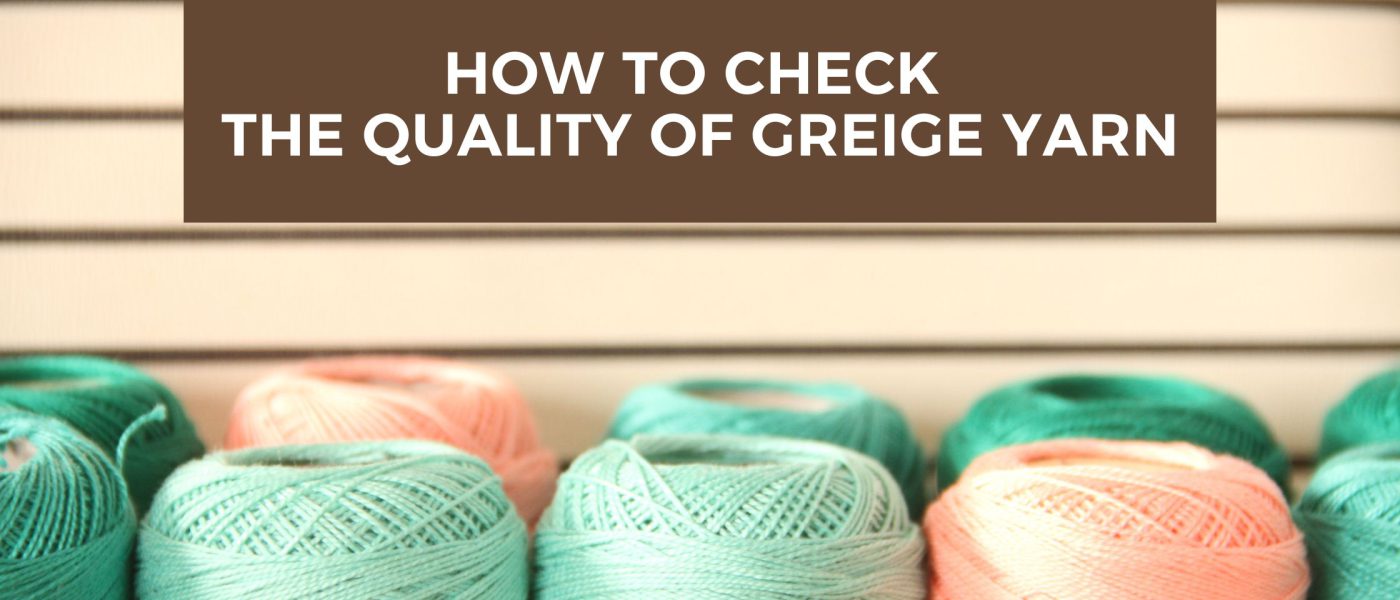If you want to buy cotton fabric online, how can you make sure the yarn used is good quality? What steps can you take to check the Greige Yarn before you buy? If you’re thinking about selling wholesale fabric online in India, this blog explains how leading textile companies in India examine yarn quality and what to consider when testing the yarn manually.
Yarn is the most integral element in textile manufacturing. It is also the most crucial component in quality control in apparel design. Yarn inspection is fundamental to ensure the quality of the final product, and manufacturers must take advantage of this step. The yarn inspection approach is used to detect quality and consistency issues in yarn, so they can be rectified before it is sent for fabric making.
Textile manufacturers in India collaborate with third-party independent quality control companies or use AI-powered process automation tools to perform yarn inspection.
How to Perform Greige Yarn Testing
Yarns are raw materials for fabric weaving and knitting. While there is no good or bad yarn, quality tests are implemented to determine which is best suited for a particular purpose.
greige yarn fibers are divided into three major types – animal-based fiber, plant-based fiber, and synthetic or man-made fibers. The fibers are farmed, cleaned, interlocked in plies, and then spun into thick strands of yarns ranging from 1 ply to 14 plies.
When performing yarn inspection, four things must be considered before buying and selling wholesale fabric online in India. They include:
- Yarn Count: Refers to the number of yarns per unit length. The higher the yarn count, the higher the quality. The unit is measured in terms of Tex or Denier.
- Yarn Color: The color displays the appearance and durability of the textile product.
- Yarn Texture: Rough yarn texture can make the final product less sophisticated or polished.
- Yarn Strength: Lower strength can easily break the final product, or it could make a flawed fabric.
What are Greige Yarn Defects and Their Types
There are two types of yarn defects: Surface and Internal
Surface Defects:
Surface defects can be seen on the surface of the yarn and thus don’t require extensive testing protocols. These defects include incorrect spinning process, impurities caused by raw material, damage, uneven color, irregular length, etc.
Internal Defects:
To determine internal defects, proper yarn inspection is required as this is not visible on the surface. They include strength, overtwist and under twist, knots, and grades. This might require you to look under a lab microscope.
Textile Companies in India look for these Characteristics to Detect Bad Quality Greige Yarn:
- Yarn that splits easily
- Breakage in plies due to incorrect trimming
- Yarn that bleeds color
- Irregular length
- Pilling of yarn
- Dust particles trapped in the yarn
- Neps (2 or more fibers entangle to form small knots)
- Formation of slubs (thick and thin yarn)
- Different grades of yarns that are mixed together
- Loops of yarn when two yarns are knotted
- Overtwist, when the yarn is spun too tightly
- Under twist, when the yarn is spun too loosely
What are the Different Types of Greige Yarn Testing
If you are dealing with a new supplier on TEXchange, we suggest ordering a yarn sample and testing it in a certified micro lab before placing a bulk order.
Yarn testing should be performed below 20 degrees C and 65% Rh to maintain a constant temperature of 27 degrees C.
The Strength Test
The strength testing is classified into two methods: single-end strength testing and skein length testing. These tests determine two types of strengths, namely tensile and ballistic. Tensile strength is found when the load is applied gradually, and ballistic strength is determined when the load is applied rapidly.
Linear Density
Textile companies in India perform this test to understand the fineness of the Greige Yarn sample. It is determined by the number of one-kilometer yarn weighing in one kilogram.
The Twist Test
The twist keeps the yarn fibers together with a spiraling of two or more strands of yarn. The twist is determined by the number of turns per meter (TPM) in a single pile or a plied yarn, which is determined by a twist tester machine.
Burn Test
Any buyer can perform the burn test without commercial equipment or a testing lab. This test finds out what the yarn is made of – wool, cotton, or synthetic fiber. The process involves burning a small piece of yarn. If the fiber smells like burned hair and the burnt ends turn to ash after rubbing, it is probably animal-based fiber.
Elongation
A tensile testing equipment with a unique grip is used to test the greige yarn strength, breaking, tenacity, toughness, and elongation.
So, before buying wholesale fabric online in India, check the quality of the greige yarn.




